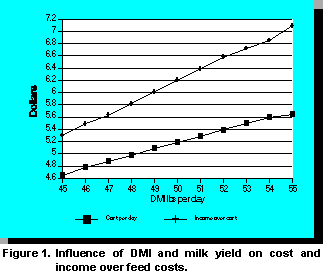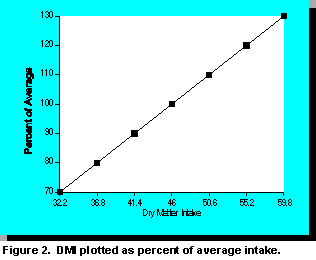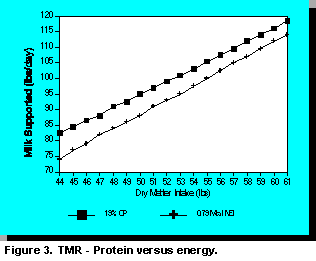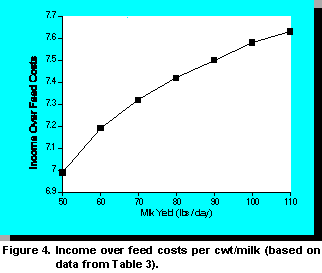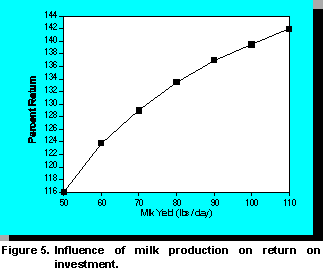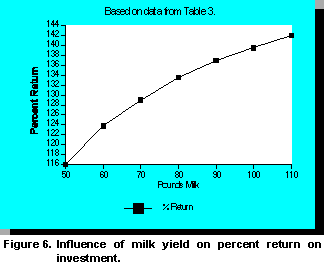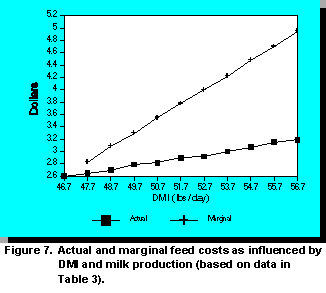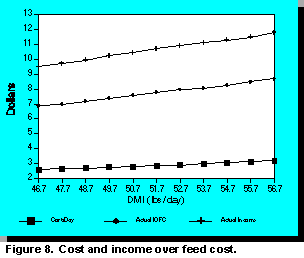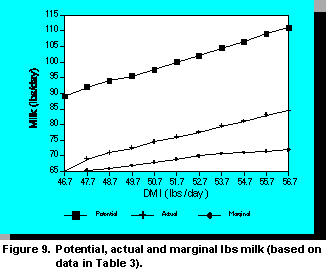Rumen microbes function most efficiently in a narrow range of pH. A minimum amount of effective fiber must be present in the rumen to maintain microbial viability and numbers and avoid sudden pH drops. Hand-fed rations have an inherent tendency to be fed in "slugs", resulting in large amounts of starch being released in a short period of time, with a severe drop in pH and drastic reduction in microbial numbers.
The whole concept of total mixed rations (TMR) is each and every bite consumed by the cow has properly balanced levels of both fiber and other nutrients to maximize rumen and post-rumen digestion and improve digestibility of all ingredients. Less expensive ingredients can also be used; coupled with better efficiency of digestion, the result should be greater profitability for the dairyman.
It is often argued that hand-fed rations allow one to feed a cow "exactly" according to her needs. I feel, in most cases, we interfere with rumen digestion in early lactation with excessive grain and improper amounts of fiber, protein, bypass protein, etc. This leads to lower milk production, laminitis, and decreased dry matter intake (DMI). At this point we feed to production needs and at best maintain current levels and too seldom replace body condition for next lactation. These production losses are "hidden" and not immediately apparent. However, most people do know of someone who has achieved high milk production on hand-fed rations. These people have learned the art of feeding cows and observing cow behavior. Much effort must be expended in feeding multiple times per day and in feeding cows to their limits on grain without crossing a certain line.
This "art" is difficult to teach and difficult to learn. Worse, it is extremely labour-intensive, and as we move towards larger farms it becomes very cumbersome to give this individualized attention to each cow. Hence, we need systems where science can replace part of the art and where machines can replace part of the labour.
At one time computer feeders were gaining in popularity. At present, however, I feel this technology has a limited future for these reasons:
The following tables illustrates the concept behind a TMR. Note in Table 1 that a cow who consumes 70% of the average total as fed intake also eats 70% of the average as fed intake of any single ingredient. See also Figure 1. Keep this figure in mind as it will be re-appearing many times under different guises.
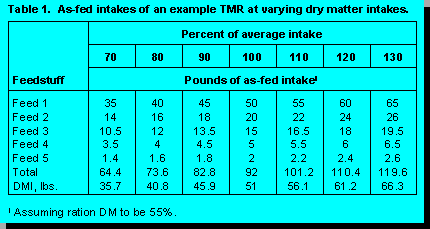
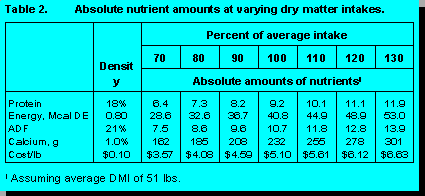
In top-dressed rations the tendency is to feed the same amounts of forages across all levels of production. This leads to fiber levels becoming dangerously low at higher grain levels and a tendency to over feed protein, leading to both health and economic problems. At lower production levels, grain and protein levels are often reduced to levels where production and replenishment of body condition suffer.
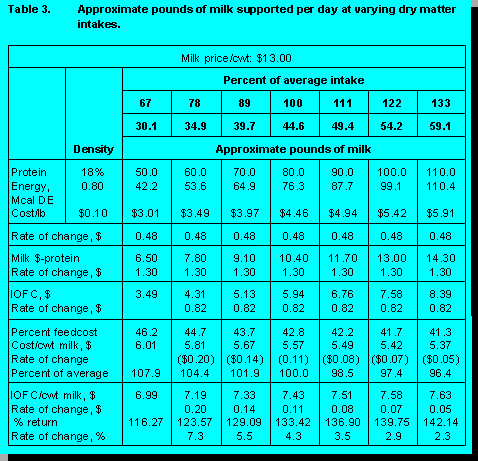
Higher production is more efficient because less of the total feed costs are directed to maintenance. Although the rate of change does slow, it still is a trend to greater efficiency no matter how high production rises. However, income is greatly increased due to increased volume. The conclusion I would draw is increased profitability can best be achieved by first maximizing efficiency through increased production/decreased feed cost per cow and then by increased numbers of cows.
